
Journal of African Media Studies
Scope & Guideline
Unraveling the Rich Tapestry of African Media Practices.
Introduction
Aims and Scopes
- Media Representation and Identity:
The journal explores how various media forms represent African identities and cultures, analyzing the impact of these representations on societal perceptions and self-identification within local and global contexts. - Digital Media and Technology:
A significant focus is on the influence of digital media technologies, including social media, on communication practices, audience engagement, and the re-negotiation of traditional media roles in the African landscape. - Crisis Communication and Public Health:
The journal addresses the role of media in public health communication, especially during crises such as pandemics, examining how information is disseminated and perceived by different audiences. - Political Economy of Media:
The journal investigates the intersection of media and politics, analyzing how media serves as a tool for political contestation, governance, and public engagement in various African nations. - Cultural Production and Popular Media:
It highlights the role of media in cultural production, particularly in music and film, and how these forms contribute to political discourse and social change. - Gender and Media:
The journal critically examines the portrayal and participation of gender in media, exploring issues of representation, empowerment, and the role of media in challenging gender norms.
Trending and Emerging
- COVID-19 and Media Responses:
A substantial increase in publications addressing the media's role during the COVID-19 pandemic highlights its critical importance in crisis communication, public health messaging, and societal resilience. - Youth Engagement and Social Media:
Emerging themes around the engagement of young Africans with social media platforms, particularly in expressing identity, agency, and political participation, reflect a growing interest in youth narratives and digital activism. - Climate Change Communication:
Recent studies are increasingly focused on how African media addresses climate change, showcasing the importance of local narratives and discussions around environmental issues in the context of global discourse. - Gender and Digital Media:
There is a rising emphasis on gender dynamics within the digital media landscape, exploring how women use digital platforms for empowerment and activism, highlighting issues related to representation and gendered narratives. - Humor and Political Discourse:
The use of humor, particularly in the context of political commentary and public engagement during crises, is a notable trend, reflecting how humor serves as a coping mechanism and tool for critique in contemporary African societies.
Declining or Waning
- Traditional Media Analysis:
There seems to be a waning focus on traditional media forms, such as print journalism and conventional television, as the journal's recent publications increasingly emphasize digital platforms and new media technologies. - Historical Media Studies:
The exploration of historical contexts and their impact on contemporary media practices appears to be less prevalent, with a shift towards current events and immediate socio-political issues. - Media Ethics and Regulation:
Discussion around media ethics and regulatory frameworks has diminished, possibly overshadowed by more pressing themes related to crisis communication and digital media challenges. - Local vs. Global Media Dynamics:
While earlier publications examined the dichotomy between local and global media influences, recent articles have shifted towards a more integrated approach, possibly downplaying the distinct challenges faced by local media. - Media Audience Research:
Research focusing specifically on media audience behaviors and their reception of media messages has become less emphasized, with a more significant focus now on content analysis and media production.
Similar Journals

Revista de Comunicacion-Peru
Advancing Knowledge in Communication and Media Analysis.Revista de Comunicación-Perú is a distinguished open-access journal published by Universidad de Piura, with a dedicated focus on communication studies. Since its inception in 2002, the journal has provided a vital platform for researchers, professionals, and students to disseminate knowledge and foster discourse in the field of communication. As of 2023, it proudly holds a Q1 classification in the Communication category and ranks impressively in Scopus, placing at #117 out of 1304 in Cultural Studies and #160 out of 511 in Communication, demonstrating its significant impact within the academic community. The journal’s scope encompasses diverse topics related to communication, cultural discourse, and media analysis, making it an essential resource for those seeking to explore contemporary issues in these areas. With a commitment to promoting scholarly exchange, Revista de Comunicación-Perú continues to play a pivotal role in shaping the communication landscape in Peru and beyond.
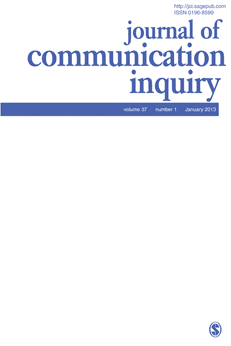
Journal of Communication Inquiry
Fostering Innovative Research in Communication and Cultural InquiryJournal of Communication Inquiry, published by SAGE PUBLICATIONS INC, is a premier interdisciplinary journal that serves as a vital platform for scholars and practitioners in the fields of communication, cultural studies, and the arts and humanities. With a rich history dating back to its inception in 1974, the journal has consistently upheld rigorous academic standards, reflected in its impressive rankings within the Q1 and Q2 quartiles across various disciplines according to the latest metrics. The journal's comprehensive scope encompasses theoretical and empirical research, catering to a diverse readership who are keen to explore contemporary communication issues and cultural dynamics. While the impact factor is not explicitly stated, the journal's Scopus ranks position it favorably within its categories, with notable percentiles that highlight its influence in the academic community. As an essential resource for researchers, professionals, and students alike, the Journal of Communication Inquiry invites contributions that advance the discourse surrounding communication practices and cultural phenomena, contributing to the ongoing dialogue in these evolving fields.
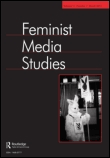
Feminist Media Studies
Unpacking Media Through a Feminist LensFeminist Media Studies is a leading academic journal published by Routledge Journals, Taylor & Francis Ltd, dedicated to the exploration and critical analysis of the intersections between media, gender, and feminism. With an ISSN of 1468-0777 and an E-ISSN of 1471-5902, this esteemed publication has established itself over its converged years from 2001 to 2024 as a pivotal platform for innovative research in the fields of communication, gender studies, and visual arts. Recognized for its excellence, the journal proudly ranks in the Q1 category in all three of its primary fields and is positioned in the top percentiles across various Scopus rankings. Although not open access, the journal provides crucial discourse that furthers an understanding of feminist perspectives in media, making it an invaluable resource for researchers, practitioners, and students alike. With its commitment to advancing knowledge and fostering dialogue, Feminist Media Studies continues to shape the terrain of feminist media scholarship.
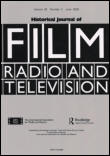
HISTORICAL JOURNAL OF FILM RADIO AND TELEVISION
Unraveling the Threads of Film, Radio, and Television HistoryHISTORICAL JOURNAL OF FILM RADIO AND TELEVISION, published by Routledge Journals, Taylor & Francis Ltd, is a leading academic publication that explores the intricate narratives of film, radio, and television throughout history. With an ISSN of 0143-9685 and an E-ISSN of 1465-3451, this journal has established itself as a vital resource for researchers and professionals within the fields of communication, history, and the visual arts, reflecting its commitment to rigorous scholarship since its inception in 1981. The journal occupies a reputable position in the academic landscape, recently categorized as Q4 in Communication and History, and Q3 in Visual Arts and Performing Arts, indicating its relevance in these fields. Despite the absence of Open Access options, the publication remains accessible to institutions and individuals eager to engage with critical analyses and historical perspectives on visual media. With its broad scope and historical emphasis, the HISTORICAL JOURNAL OF FILM RADIO AND TELEVISION is crucial for understanding the evolution of media and its impact on culture, making it an essential read for scholars and practitioners alike.

Television & New Media
Exploring the Nexus of Media and CultureTelevision & New Media is a leading academic journal dedicated to the exploration of the intricate relationships between television, new media technologies, and contemporary culture. Published by SAGE Publications Inc, this journal boasts an impressive impact factor, placing it in the prestigious Q1 category for both Cultural Studies and Visual Arts and Performing Arts as of 2023. Its high rankings in Scopus—#8 in Visual Arts and Performing Arts and #24 in Cultural Studies—underscore its significance in the academic community, reflecting its robust contribution to the discourse on media and culture. Spanning from 2000 to 2024, the journal features cutting-edge research that offers insights into the evolving dynamics of media and its societal implications, making it an essential resource for researchers, professionals, and students alike. Although currently not open access, the journal ensures that its contents are accessible through academic libraries, facilitating the dissemination of knowledge in an ever-changing digital landscape.
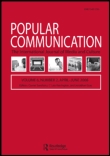
Popular Communication
Uncovering Trends that Shape Our ConversationsPopular Communication, published by Routledge Journals, Taylor & Francis Ltd, is a leading academic journal in the field of Communication, recognized for its Q1 ranking in the 2023 Scopus category. With an ISSN of 1540-5702 and an E-ISSN of 1540-5710, this journal has been converging significant research from 2010 to 2024, highlighting contemporary trends and evolving dynamics in popular communication practices. The journal is based in the United Kingdom and focuses on the intersection of media, culture, and communication, making it a vital resource for researchers, professionals, and students interested in understanding the impact of communication in society today. Although it does not offer Open Access options, it remains a cornerstone for scholarly discourse, with an impressive rank of #96 out of 511 in Social Sciences Communication, placing it in the 81st percentile. Contributions to this journal play a critical role in advancing knowledge and encouraging further scholarship in the diverse realm of popular communication.

Media International Australia
Unveiling the Complexities of Media InfluenceMedia International Australia is a leading journal that occupies a unique position at the intersection of communication and cultural studies. Published by SAGE Publications Ltd, this journal has established itself as a vital platform for scholarly discourse since its inception, now converging efforts from 2008 to 2024. With an impressive Q1 ranking in both the Communication and Cultural Studies categories, it ranks 12th out of 1304 in Cultural Studies and 42nd out of 511 in Communication, placing it within the 99th and 91st percentiles respectively according to Scopus metrics. The journal is committed to providing access to rigorous research that reflects contemporary issues in media, making it essential reading for researchers, professionals, and students keen on advancing their understanding of media's role in society. Despite not being fully Open Access, it ensures that quality research remains accessible through institutional subscriptions, allowing a broad audience to benefit from its insightful contributions.

Global Media Journal-Canadian Edition
Connecting Canadian Perspectives to Global Media Trends.Global Media Journal-Canadian Edition is a prestigious academic outlet that delves into the intersections of communication, media studies, and cultural discourse. Published by the University of Ottawa's Department of Communication, this journal serves as a platform for innovative research and critical analysis, highlighting the dynamics of media in a global context with a specific focus on Canadian perspectives. Since its transition to Open Access in 2008, the journal has greatly expanded its readership and accessibility, enabling a wider dissemination of knowledge. Despite facing a Q4 category quartile ranking in 2023 for the field of Communication, it continues to promote scholarly dialogue and is a valuable resource for researchers, professionals, and students alike, eager to explore contemporary media issues. The journal has documented converge years from 2013 to 2017 and 2021, fostering timeless discourse that resonates with the ever-evolving landscape of media and communication.

JOURNAL OF POPULAR FILM AND TELEVISION
Advancing Critical Discourse in Visual and Performing Arts.JOURNAL OF POPULAR FILM AND TELEVISION, published by Routledge Journals, Taylor & Francis Ltd, stands as a significant platform for academic discourse in the realms of cultural studies, visual arts, and performing arts. With its ISSN: 0195-6051 and an evolving digital presence indicated by its E-ISSN: 1930-6458, the journal has carved out a respected niche since its inception in 1978, continuing to contribute to scholarly discussions through 2024. Its impact within the academic community is underscored by a Q3 ranking in Cultural Studies and a Q2 ranking in Visual Arts and Performing Arts for 2023, highlighting its relevance across diverse fields. Notably, with a Scopus ranking placing it in the 74th percentile among visual arts and performing arts journals, it serves as an essential reference point for researchers, professionals, and students committed to the critical examination of film and television. Although not an open-access journal, it provides valuable insights and analysis that enrich understanding of popular media's impact on society. The journal's location in the United States, with a headquarters in Abingdon, England, further affirms its international scope and influence.
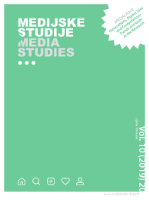
Medijske Studije-Media Studies
Empowering Voices in Media StudiesMedijske Studije-Media Studies, an esteemed journal published by SVEUCILISTE & ZAGREBU, FAK POLITICKIH ZNANOSTI, is a pivotal platform in the field of communication studies and media research. Established in Croatia, this Open Access journal since 2010 features a diverse array of research articles that explore the multifaceted relationships between media and society. With its ISSN 1847-9758 and E-ISSN 1848-5030, the journal serves an international audience and is committed to disseminating innovative insights that drive media scholarship forward. Currently ranked in the Q3 category in Communication and Q4 in Computer Science Applications for 2023, it reflects its growing influence, capturing vital trends and analyses that resonate in both academic and practical realms. The journal's Scopus rank sits at #337 out of 511 in Social Sciences_ Communication, placing it within the 34th percentile, thus establishing its relevance in the global discourse on communication. Researchers, professionals, and students are encouraged to engage with this resource as it continues to forge connections between media studies and contemporary societal issues.